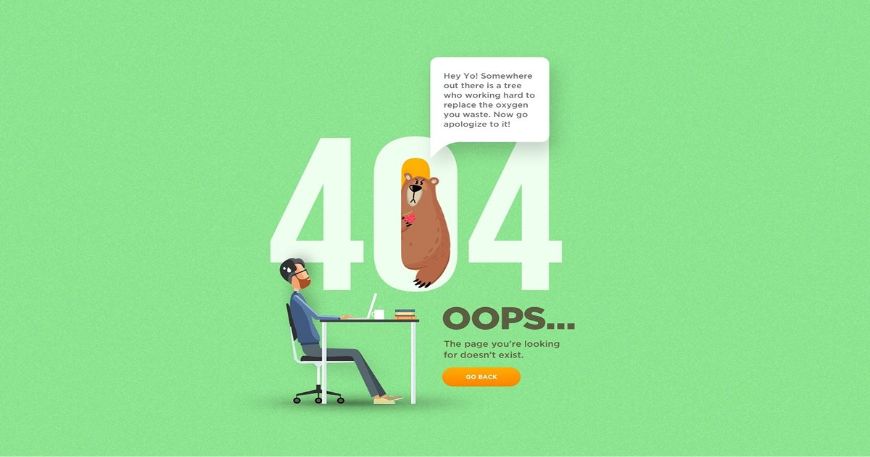A 404 Error is one of the most common issues encountered while browsing the internet. It signifies that the server couldn’t find the webpage you were trying to access. While these crimes can frustrate users, they also offer website owners a precious opportunity to optimise user experience and maintain engagement. Let’s dive into the specifics of a 404 Error, its causes, impacts, and ways to address it effectively.
Understanding the Basics of a 404 Error
When you type a URL or click on a link, your browser requests the server to retrieve the page. A 404 Error occurs when:
- The page no longer exists on the server.
- The URL was mistyped or broken.
- The page was moved to a new position without proper redirection.
The full error message frequently reads “404 not found.” While it’s a specialised response code, for end users, it simply means, “The runner you’re looking for isn’t here.”
Causes of a 404 Error
Deleted Content
However, visitors will encounter a 404 Error if a webpage is removed without redirecting its URL.
Broken Links
Hyperlinks that lead to missing or incorrectly spelled URLs result in errors.
Misspelled URLs
Manual errors, similar to mistyping the URL in the browser, can lead to this issue.
Improper Website Migration
Moving a website to a new domain without setting up redirects can leave links pointing to outdated pages.
Server Issues
Infrequently, a 404 Error can occur if the server hosting the website is misconfigured or passing a time-out.
How Do 404 Errors Impact Your Website?
- User Frustration: Visitors encountering frequent 404 Errors may abandon your website, impacting overall engagement.
- SEO Performance: Search engines like Google negatively score websites with too numerous broken links, affecting your ranking.
- Loss of Trust: A website riddled with errors appears unreliable, potentially driving customers to competitors.
How to Fix and Prevent 404 crimes
Implement 301 Redirects
Always set up a 301 redirect when removing or shifting pages to guide users to an updated or applicable page.
Monitor Website Links
Regularly check for broken internal and external links using tools like Google Search Console or online link checkers.
Update Your Sitemap
Submit a streamlined sitemap to search engines to help them understand your website’s structure.
Customise Your 404 Page
A creative, user-friendly 404 Error page can retain visitors by offering helpful navigation links, a search bar, or a touch of humour.
Perform Regular Audits
Frequent website checkups ensure you catch and resolve issues before they impact users.
Why Custom 404 Pages Matter
A default 404 page is bland and harmful, but a customised one can turn a bad experience into an occasion. An engaging 404 page could include
- Clear messaging that the page is unapproachable.
- Suggestions for alternative pages or content.
- A link back to the homepage or main navigation.
- A fun, light-hearted tone to ease frustration.
For instance, an e-commerce store could include popular product suggestions, while a blog could showcase trending articles.
Final studies
A 404 Error might feel like a small inconvenience, but its implications can be far-reaching for user experience and website performance. Understanding what causes these errors, how to address them, and creating a user-friendly 404 page can turn a negative interaction into a positive one. By prioritising a flawless browsing experience, you can retain users, boost your SEO, and demonstrate your commitment to maintaining a reliable website.
Need to Help Managing Your Website Errors?
Don’t let 404 Errors frustrate your visitors or harm your website’s performance! At Systronic, we specialise in website maintenance, error shadowing, and creating seamless user experiences.
- Identify and Fix Broken Links
- SEO- Optimised Redirections
- Custom 404 Error Pages
- Comprehensive Website Audits
Get in Touch Today!
Let us handle the technical challenges so you can focus on growing your business. Contact us today by just calling at +61 2 8599 2876 or email us on info@systronic.com.au
Frequently Asked Questions
Can a 404 Error detriment my website’s SEO?
Excessive 404 Errors can harm your SEO by signalling to search machines that your site has poor user experience or broken links.
How can I track 404 Errors on my website?
Use tools like Google Search Console, Screaming Frog, or broken link checkers to identify and cover 404 Errors.
Is it normal to have some 404 Errors?
Yes, occasional 404 Errors are normal and frequently unavoidable, especially as websites evolve. The key is to address them quickly.
What’s the difference between 404 and server errors?
A 404 Error indicates that a page cannot be set up, while a server error (line 500) points to an issue with the website’s hosting or server.
Can I completely help 404 Errors?
It’s challenging to exclude 404 Errors entirely, but proactive operations, regular checkups, and redirects can significantly minimise them.




